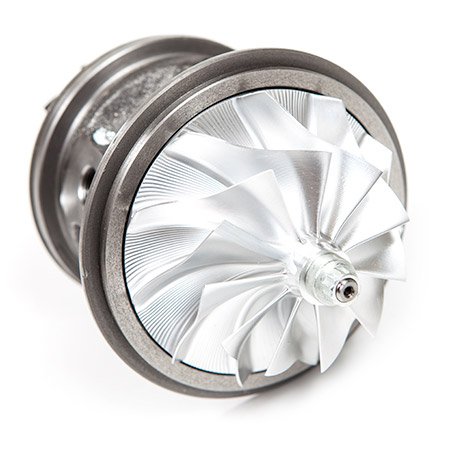As I've said in the past, the F23L is a 280 gram/second turbo. And to give a little perspective on what that means, this independent website is really useful: http://www.squirrelpf.com/turbocalc/
At this link you will find an excellent "Turbo Calculator" for any engine configuration you could imagine. And here is a helpful link to this page with most of the basic parameters already filled in:
http://www.squirrelpf.com/turbocalc/...=1&map_sel0=32
350bhp on a 2 liter displacement. Sounds like fun, eh? But the interesting part comes when you take advantage of this calculator's ability to chart the airflows you want on a number of pre-loaded compressor maps. For example is the Garrett GT2860RS. That's the famous Disco Potato! Here are some screen shots to illustrate the statistics you will see with that turbo selected:
This is the layout of parameters entered in order to create the calculations:

And here is the resulting chart of how the actual airflows would fit the compressor map.

As you can see, the calculator's airflows stay safely to the right of the surge line and fall within the map, and the rotational speed to achieve the required boost is just a hair outside the compressor wheel's mapped range. So all in all, looking pretty good Disco!
Now, to begin relating this information to the F23L, we simply need to make use of some of the information generated by the calculator. It's highlighted in red here:

The numbers in the bottom two rows display airflows in two measurement values. The top one is in cubic meters per second (volume). The one below is its equivalent in kilograms per second (weight). Let's plug in those kg/sec values against some actual airflows collected by F23L owners in the last couple of weeks (values are shown in grams/second, as output by the cars' OBD ports):

Again, these two lines are comparing the necessary airflows to achieve 350bhp with the actual, real-world values recorded by our F23L turbo. And it's worth mentioning that the Gt2860RS values reflect specific inputs for estimated boost onset, peak power, air temperatures, etc. So this graph reflects my estimate for a solidly-supported Disco Potato delivering 350bhp on a 2L displacement.
But there's no need for such guesswork when you have complete data collected in real-world testing. Unlike the airflow paths charted above for the GT2860RS, we have actual F23L airflow information that can be directly overlaid onto our published compressor map. And here is the result:

By applying actual airflows to the F23 compressor map we have the means to evaluate the F23L compressor's suitability to the demands of a 350bhp output. And, bottom line, the airflows (shown in blue) are within the map for the entire run. This is proof positive that the turbo is functioning as designed. And an important note: this overlay is based upon the exact volume/weight ratios in the SquirrelPerformance calculations: 1.10:1.00. BorgWarner however uses the less-stringent ratio of 1.17:1.00 in its own R&D. For the purposes of this graph, I applied the higher standard of the two.
This documentation is simply another demonstration of a long-proven fact. The F23-series compressor wheel strikes an excellent balance between low-end responsiveness and top end power. I'm going to close out with a quick video taken from an FSI-engine Mk5, actually exceeding our rated horsepower on a stock motor.
Thx













 Reply With Quote
Reply With Quote



 That's pretty poor of Frankenturbo to do.
That's pretty poor of Frankenturbo to do.
 . What else you want
. What else you want
 [/QUOTE]
[/QUOTE]








Bookmarks